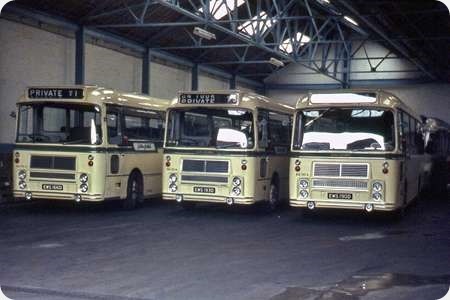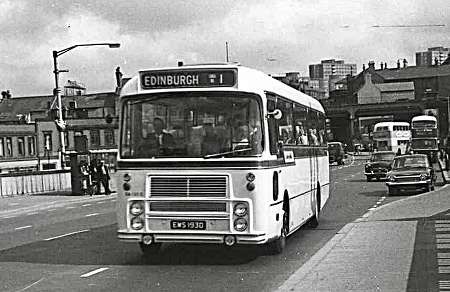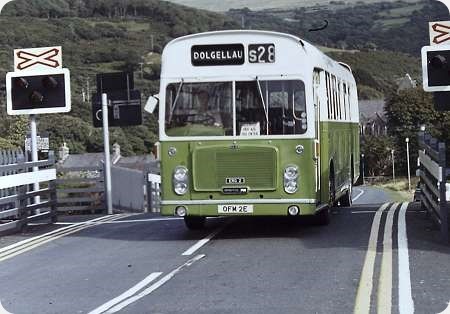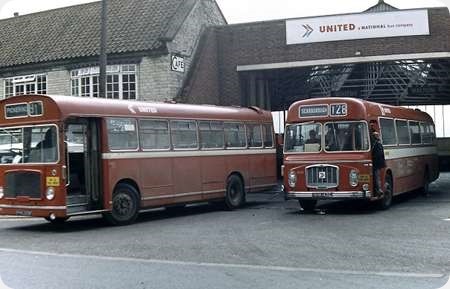Eastern Scottish – Bristol RE – EWS 166D – XA 166 A
Eastern Scottish
1966
Bristol RELH6G
Alexander C38F
Seen on layover in London are three of the Alexander C38F bodied Bristol RELH6G coaches operated by Eastern Scottish from a batch totalling 33 vehicles of the type delivered in 1966. These toilet equipped coaches brought a new level of refinement to the lengthy journey between the Capital and Caledonia for several years. In this picture, none of the vehicles is carrying the ‘Bristol RE’ nameplate on the radiator grille which they certainly wore at another time in their lives.
Photograph and Copy contributed by Roger Cox
11/07/22 – 06:02
Just to clarify, the vehicles from left to right are EWS 166D, EWS 193D and EWS 190D, with matching fleet numbers XA166/193/190 A.
Roger Cox
11/07/22 – 06:03
I could be wrong on this ‘I frequently am’ but I’m pretty sure that the services to Scotland, i.e. Edinburgh, Glasgow and Inverness, were all overnight only.
Unlike the United Tyne Tees Thames, which was twice a day. 8am and pm if memory serves.
Ronnie Hoye
12/07/22 – 05:43
Eastern Scottish did operate daytime services between London and Edinburgh, per my photo herewith.
Richard Slater
13/07/22 – 06:15
Thanks for that, Richard. I did say that I was frequently wrong.
The location looks to be the start of the Tyne Bridge, heading north towards Newcastle.
The bus facing us, is probably a Gateshead & District Alexander ‘A’ type bodied Leyland Atlantean, and the one to the left is a Newcastle Corporation, or possibly by that time a PTA turning to go towards Gateshead Station.
Bit hard to tell, but my guess would be a P/R bodied MkV AEC Regent.
Ronnie Hoye
13/07/22 – 06:16
I think you’ll find that you are both correct. Eastern Scottish called the daytime services "Tours" – as they took 2/3 days to do the journey with overnight stops.
David Oldfield
14/07/22 – 06:01
The Summer 1969 ABC Bus and coach guide shows conventional daytime journeys on both routes (Edinburgh and Glasgow), which completed the journeys within the same day. As far as I know, the 2/3 day tours were only operated by Eastern Scottish.
Departure was at 08:00 from both ends, on both routes.
Nigel Frampton
15/07/22 – 06:05
Memory tells me that, in my student days in Birmingham, the Standerwicks would move out of the fast lane only for blue lights and the Scottish coaches, and I think they were usually Western, rather than Eastern, on the M6.
Pete Davies
16/07/22 – 06:24
Speaking as a retired LGV Instructor, Pete, I can tell you quite categorically that there is no such thing as the ‘Fast Lane’ on UK Motorways. You drive on the left, unless overtaking
Ronnie Hoye
17/07/22 – 06:29
Ronnie: Unfortunately regardless of how many times broadcasters have been told by me and others to stop using "Fast Lane" in traffic reports they will persist and thus those like Pete perpetuate it in everyday usage.
I remember once climbing the M6 southbound from Penrith towards Shap Summit and there were 3 coaches from different companies (Well different liveries anyway) having a 3 mile drag race up the gradient.
John Lomas
Quick links to the - Comments Page - Contact Page - Home Page




